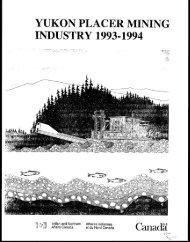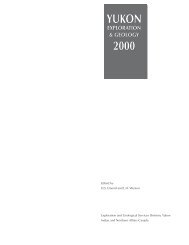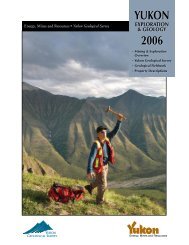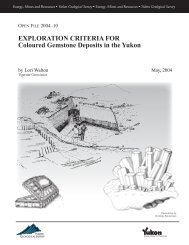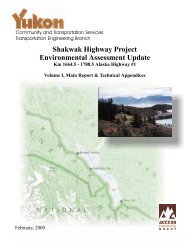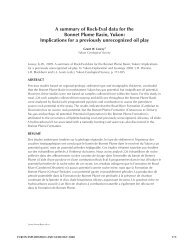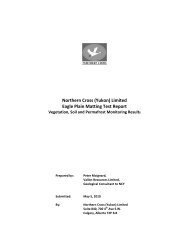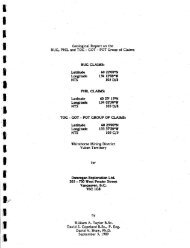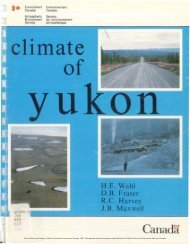WhiteCAP_Plan_01SEPT..
WhiteCAP_Plan_01SEPT..
WhiteCAP_Plan_01SEPT..
You also want an ePaper? Increase the reach of your titles
YUMPU automatically turns print PDFs into web optimized ePapers that Google loves.
Northern Climate ExChange <strong>WhiteCAP</strong> Draft <strong>Plan</strong><br />
The use of spatial information in this report has been largely to inform the observations<br />
provided to us by the community and by the Local and Technical Advisory Committees.<br />
Quantitative information has therefore not played a significant role in the planning<br />
process. In part our reliance on qualitative data has arisen due to the emphasis on local<br />
and technical knowledge in the plan. Quantitative data has also been challenging to<br />
integrate due to the broad nature and suite of issues that this plan addresses. As<br />
uncertainty is addressed and additional information becomes available, it is likely that a<br />
greater emphasis can be placed quantitative information in the adaptation planning<br />
process. It is encouraged that quantitative information should be integrated into future<br />
versions of this adaptation plan as opportunity allows.<br />
3<br />
This uncertainty is compounded when the large resolution and level of error in the model is<br />
refined or downscaled to a scale suitable for regional planning. Global Climate Model (GCM) grid<br />
cells are typically 1° to 5º latitude and longitude in size. Downscaling introduces error into the<br />
climate model by interpolating the implications of climate change a regional scale. It has also<br />
been observed that a polar amplification of the influence of greenhouse gas emissions and other<br />
variables influencing climate occurs in GCMs. This amplification varies with each GCM and some<br />
projections of climate change in northern regions or more robust. The performance of the GCM<br />
over the broader north correlates to their performance over Greenland and Alaska. Some level of<br />
error is associated with all GCM projections (Walsh et al, 2008).<br />
4<br />
The Project Team presented at two Council and Senior Management (CASM) sessions in the<br />
spring of 2009. The City of Whitehorse (COW) provided official approval for staff participation in<br />
the project at an official council meeting in the summer of 2009. [also meeting with Ta’an lands<br />
group in summer 2010]<br />
5<br />
The Whitehorse Technical Advisory Committee is made up of professionals from within and<br />
outside the community. The mandate of the Technical Advisory Committee is to provide<br />
academic and professional support for the adaptation planning process through the integration of<br />
local and scientific knowledge.<br />
8



